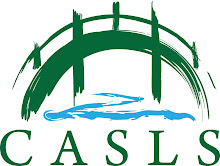FLTEACH listserv users have been sharing ideas for learning stations. Here are some of their suggestions:
---
I try to have stations that correspond to some system, such as Blooms levels, Gardner learning styles, or just 2 each for listening, reading, writing, speaking.
Leave a timer and a set of cards to match (one in TL, one in English, if doing vocab) and have the partners take turns timing each other....One partner grabs the cards and lays them down in pairs; the partner checks for accuracy and stops the timer when he decides they are correct. Then they write the time down and initial it for completion. Then it's the other partner's turn.
I like to leave a set of verb cards and a die to throw....they throw once to get a subject pronoun, and a second time to get the verb, and then have to make me a Juicy Sentence: subject, verb and at least 2 more things: with whom, where, when, why.
I made a couple flip chutes and my students go crazy for them. http://www.comalisd.org/Schools/OCES/PDF/3rdmathfactflipchute.pdf You can have them practice any sort of vocab or grammar, in a flashcard-ish way.
I like to put a piece of butcher paper up on the wall and have them sort of "blog.” I start with a question, or a picture to comment on / describe which the next person answers (in a DETAILED way) and then the next person comments either on the answer or starts a new "thread"... Again, they initial their contribution. And get no credit if they echo something earlier on the wall (so they have to read what's already there before posting).
I generally make one of the stations a "survey five classmates" activity. They pick up a grid and go question five other people, writing down their names and responses. That helps with space issues; all I need is a shelf to put the forms on, or a magnet to stick them to the board.
As for the "chaos" aspect....my classes are all at least 30 students, and my classroom smaller than normal size. I make the kids count off for the number of options (for instance, if I have six stations, they count in sixes.....and that number is the number of where they start) This also often separates them from their best buddies (more work accomplished) and eliminates the where-do-I-start issue.
I also, in the interests of having a Differentiated Classroom, do NOT require everyone to do all the stations. I might say, Do Four of the Six, for example. This way, they can select ones that interest them; even if they skip one that looks hard to them, they are actually engaging in self-reflection by recognizing that they are weak in that skill and still need to work on it.
Blas, D. Re: [FLTEACH] learning stations ideas 1. FLTEACH listserv (FLTEACH@LISTSERV.BUFFALO.EDU, 1 Dec 2011).
---
I will have between four and six activities. Certain activities would be color coded. Yellow (easiest) to red (hardest) with green, pink, blue, orange in between.
I would direct them to pick one red and one yellow and two of the other colors of their choice. That way they have something that could be challenging , one thing easy (review) and two intermediate activities.
Snyder, John. Re: [FLTEACH] learning stations Deb Blaz. FLTEACH listserv (FLTEACH@LISTSERV.BUFFALO.EDU, 2 Dec 2011).
---
I recently did stations with my students in French I and it worked very well. If this is to be a regular thing, it would be nice to keep track of their work and their progress. For example, with my students, I had them keep hard copies of their work in a file folder as they went from station to station. After I went through their work, I attached a basic rubric, assigning their points earned for each station and keeping a total. This will be made into a poster or chart at the end of this week with total points listed for each group and will be one of our ongoing competitions as well as a regular assessment. I'm not sure about your classes, but my students love competitions and this is a significant source of motivation.
In terms of keeping students on track, I found that as long as their task has clearly defined, basic directions and is something that most all students will be able to do independently - or if you strategically create their groups heterogeneously by level - they shouldn't have a problem staying on task.
Blair, Stacy. Re: [FLTEACH] setting up stations in the Spanish classroom. FLTEACH listserv (FLTEACH@LISTSERV.BUFFALO.EDU, 30 Nov 2011).
---
Read Ana Lomba’s recent blog post about “Play and Learn Spaces” for more creative ideas about using classroom space for both independent and whole-class language work at http://www.analomba.com/anas-blog/how-to-create-the-best-language-learning-playrooms-for-your-kids-or-students
December 18, 2011
Subscribe to:
Post Comments (Atom)





I think it would be cool to use todaysmeet.com for the 'blog' type response, so that it can be an ongoing thread type situation for that station for the whole period or day (various periods). Thoughts?
ReplyDelete